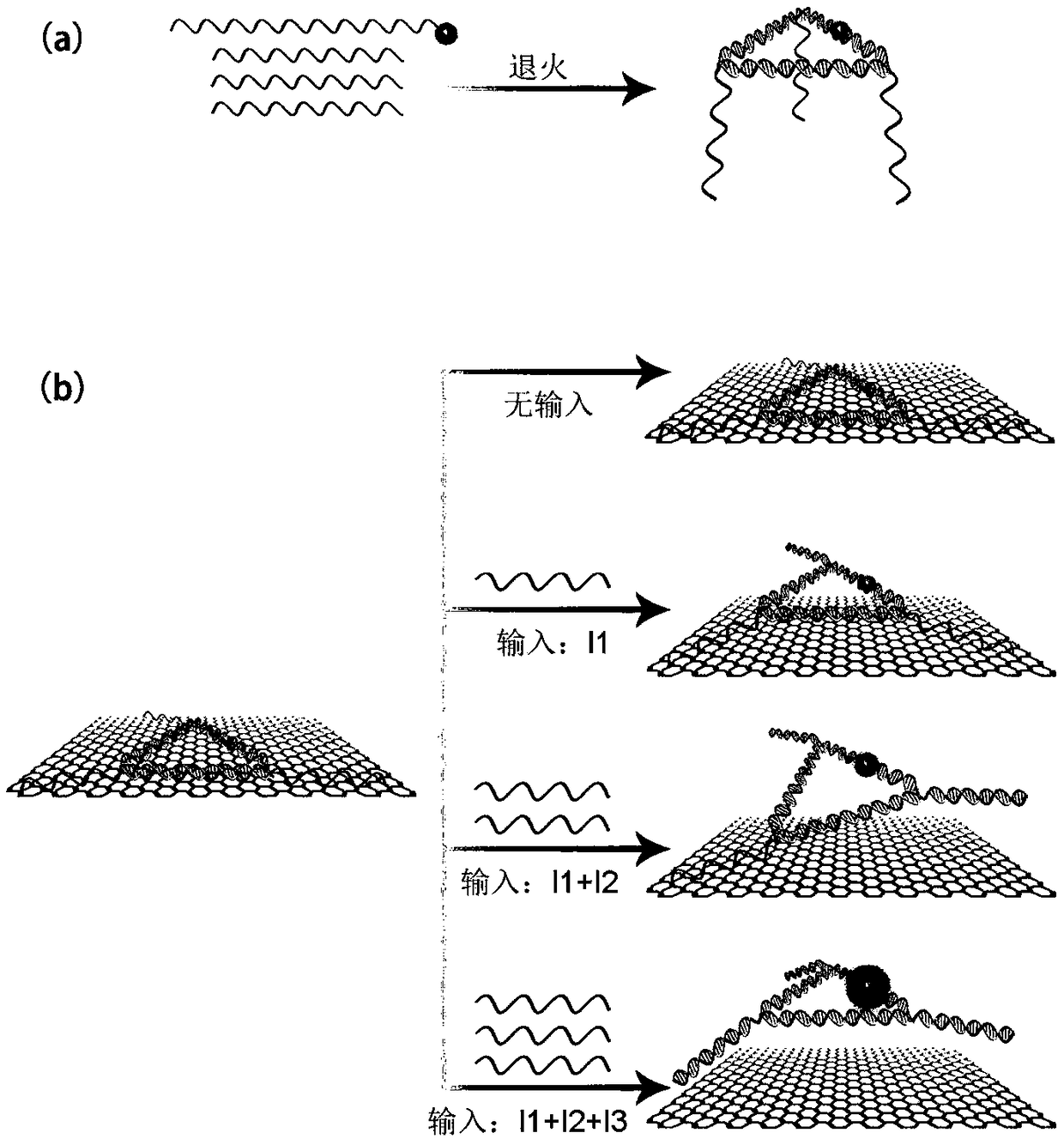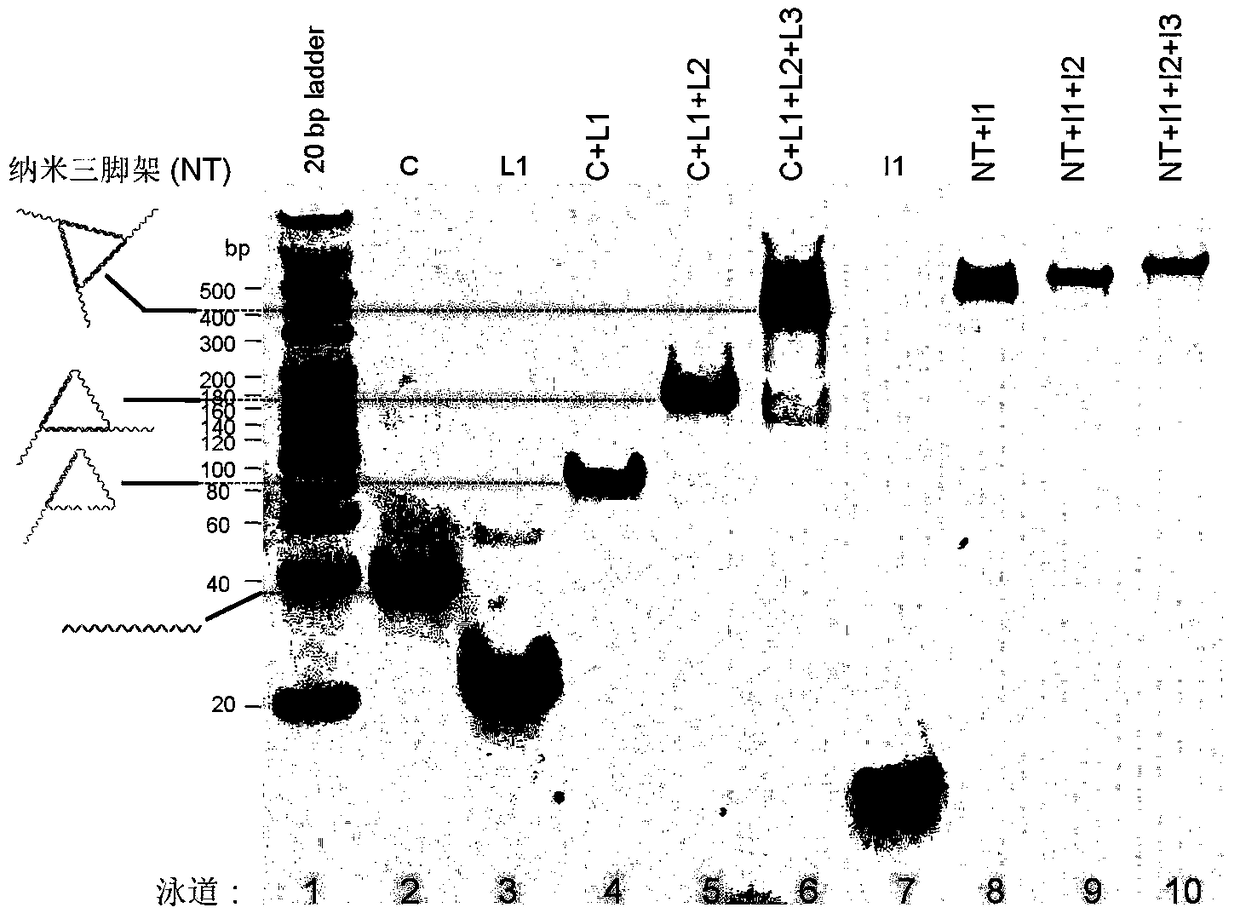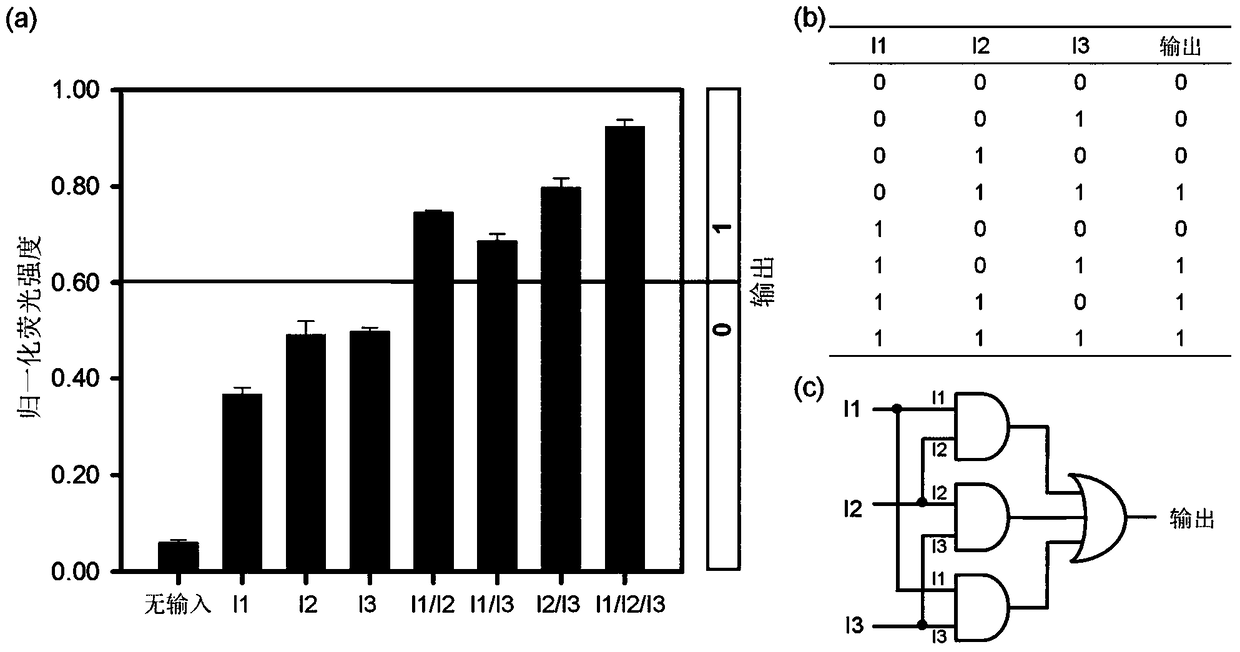DNA nano tripod-based molecular logic gate for regulating interaction between fluorescent small molecule and graphene oxide and construction method thereof
A tripod and logic gate technology, applied in the field of molecular logic gates and their construction, can solve problems such as increasing the cost of constructing logic gates, scattered logic device structures, and redundant circuits.
- Summary
- Abstract
- Description
- Claims
- Application Information
AI Technical Summary
Problems solved by technology
Method used
Image
Examples
Embodiment 1
[0061] Using DNA nano-tripod to regulate the interaction between the loaded fluorescent group ROX and graphene oxide, a majority logic gate was constructed.
[0062] Take 8 EP tubes, numbered 1, 2, 3, 4, 5, 6, 7 and 8, and add 20 μL DNA nanotripod stock solution with a concentration of 200 nM, 50 μL H 2 O and 10 μL of a graphene oxide aqueous solution with a concentration of 200.0 ug / mL that were pre-sonicated, mixed, and incubated at room temperature for 10 min.
[0063] Then, no signal input chain is added or the signal input chains I1, I2 and I3 are added separately or in pairs or all are added, and the single-chain leg of the tripod is used as a signal receiving channel to receive the corresponding signal input chain and hybridize with it Form double strands and desorb from the surface of graphene oxide, so that the state of the DNA nano-tripod on the surface of graphene oxide is different, thereby regulating the interaction between the fluorescent groups loaded on it and ...
Embodiment 2
[0071] Construction of two-input AND logic gates and OR logic gates
[0072] Take 4 EP tubes, numbered 1, 2, 3 and 4 respectively, add 20 μL DNA nanotripod stock solution with a concentration of 200 nM, 50 μL H 2 O and 10 μL of a graphene oxide aqueous solution with a concentration of 200.0 ug / mL that were pre-sonicated and dispersed, mixed evenly, and incubated at room temperature for 10 min, and then performed the following treatments.
[0073] Add 20 μL HO to tube 1 2 O, mix well; add 4 μL of I2 chain at a concentration of 5 μM and 16 μL of HO to tube 2 2 O, mix well; add 4 μL of I3 chain at a concentration of 5 μM and 16 μL of HO to tube 3 2 O, mix well; add 4 μL of I2 chain at a concentration of 5 μM, 4 μL of I3 chain at a concentration of 5 μM, and 12 μL of HO into tube 4 2 O, mix well.
[0074] Place each sample tube in a biochemical incubator and incubate at 37°C for 30min.
[0075] Take 95 μL of sample and transfer it to a cuvette to measure the fluorescence of t...
Embodiment 3
[0087] Construction of INHIBIT logic gates
[0088] Take 4 EP tubes, numbered 1, 2, 3 and 4 respectively, add 20 μL DNA nanotripod stock solution with a concentration of 200 nM, 4 μL I2 chain with a concentration of 5 μM, 46 μL H 2 O and 10 μL of a graphene oxide aqueous solution with a concentration of 200.0 ug / mL that had been pre-sonicated, mixed evenly, and incubated at room temperature for 10 min, and then performed the following treatments.
[0089] Add 20 μL HO to tube 1 2 O, mix well; add 4 μL of I1 chain at a concentration of 5 μM and 16 μL of HO to tube 2 2 O, mix well; add 4 μL of 5 μM I1’ chain and 16 μL of H to tube No. 2 O, mix well; add 4 μL of I1 chain at a concentration of 5 μM, 4 μL of I1’ chain at a concentration of 5 μM, and 12 μL of H 2 O, mix well.
[0090] Place each sample tube in a biochemical incubator and incubate at 37°C for 30min.
[0091] Take 95 μL of sample and transfer it to a cuvette to measure the fluorescence of the sample at room tempe...
PUM
 Login to View More
Login to View More Abstract
Description
Claims
Application Information
 Login to View More
Login to View More - R&D
- Intellectual Property
- Life Sciences
- Materials
- Tech Scout
- Unparalleled Data Quality
- Higher Quality Content
- 60% Fewer Hallucinations
Browse by: Latest US Patents, China's latest patents, Technical Efficacy Thesaurus, Application Domain, Technology Topic, Popular Technical Reports.
© 2025 PatSnap. All rights reserved.Legal|Privacy policy|Modern Slavery Act Transparency Statement|Sitemap|About US| Contact US: help@patsnap.com



